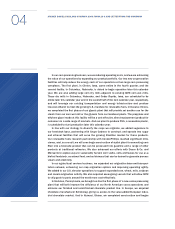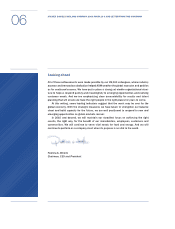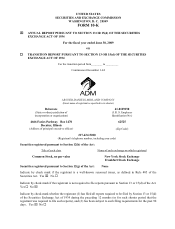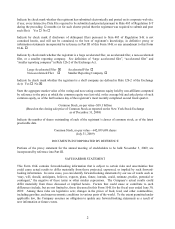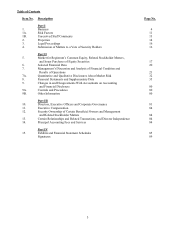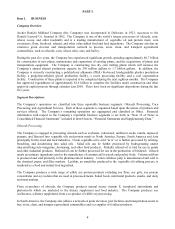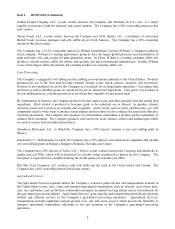Archer Daniels Midland 2009 Annual Report Download - page 14
Download and view the complete annual report
Please find page 14 of the 2009 Archer Daniels Midland annual report below. You can navigate through the pages in the report by either clicking on the pages listed below, or by using the keyword search tool below to find specific information within the annual report.8
Item 1.
BUSINESS (Continued)
The Company has added several cooked, dried edible bean products to the Vegefull™ line to meet customer
demands for increased protein and fiber in food.
The Company continued to advance its partnership with Metabolix for the production and marketing of PHA, a
bio-based, biodegradable renewable plastic made from the starch in corn. The partnership continues to produce
semi-works volumes of PHA that are being used for market development by Telles, a joint venture of the Company
and Metabolix
The Company is constructing a 100,000 metric ton per-year propylene/ethylene glycol facility in Decatur, Illinois.
In 2007, the Company entered into a development agreement with ConocoPhillips to develop affordable, renewable
transportation biofuels from biomass. A technology platform has been developed following extensive evaluation of
potential options for the production of bio-crude materials that can be used by conventional petroleum refineries to
produce gasoline and diesel components and will be piloted in fiscal year 2010.
Source and Availability of Raw Materials
Substantially all of the Company’s raw materials are agricultural commodities. In any single year, the
availability and price of these commodities are subject to factors such as weather, plantings, government
programs and policies, changes in global demand created by population growth and changes in standards of
living, and global production of similar and competitive crops. The Company’s raw materials are procured from
thousands of growers, grain elevators, and wholesale merchants, in North America, South America, Europe,
Asia, and Africa, pursuant to short-term (less than one year) agreements or on a spot basis. The Company is not
dependent upon any particular grower, elevator, or merchant as a source for its raw materials.
Patents, Trademarks, and Licenses
The Company owns valuable patents, trademarks, and licenses but does not consider any segment of its business
dependent upon any single or group of patents, trademarks or licenses.
Seasonality, Working Capital Needs, and Significant Customers
Since the Company is so widely diversified in global agribusiness markets, there are no material seasonal
fluctuations in the manufacture, sale, and distribution of its products and services. There is a degree of seasonality
in the growing cycles, procurement, and transportation of the Company’s principal raw materials: oilseeds, corn,
wheat, cocoa beans, and other grains. However, the physical movement of the millions of metric tons of these
crops through the Company’s processing facilities is reasonably constant throughout the year.
Price variations and availability of raw agricultural commodities may cause fluctuations in the Company’s working
capital levels. No material part of the Company’s business is dependent upon a single customer or very few
customers.
Competition
The Company has significant competition in the markets in which it operates based principally on price, quality,
products and alternative products, some of which are made from different raw materials than those utilized by the
Company. Given the commodity-based nature of many of its businesses, the Company, on an ongoing basis,
focuses on managing unit costs and improving efficiency through technology improvements, productivity
enhancements, and regular evaluation of the Company’s asset portfolio.


